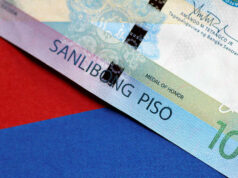TECHNOLOGY providers, project developers and investors from Asia, Europe and the US are looking to partner with electric cooperatives in bringing electricity to rural communities by building self-sustaining minigrids.
The partnership matchmaking exercise will be conducted in a three-day business-to-business forum highlighting Philippines’ potential to implement minigrids through clean energy technology or a hybridization of the existing 374.5 megawatts (MW) of power plants that run on diesel fuel.
“The Filipino government and the Department of Energy are interested in bringing investors. They co-organized with us this forum. They gave an opportunity for our member companies to interact with the electric cooperatives. And they really appreciate it. Now it’s easier for them to come and attend this event to do the matchmaking,” said Katarina U. Hasbani, vice-president of the board of directors of Alliance for Rural Electrification (ARE), in an interview on Wednesday.
ARE is an international business association representing the decentralized energy sector working towards the integration of renewable energy into rural electrification markets in developing and emerging economies.
“One of the value-added (benefits of) being a member of the Alliance for Rural Electrification (ARE) as an association is that we have a platform so it’s easier for us to go to the investors and say, ‘look this is the pipeline of the projects that we have’,” she added.
The forum, which ends on Friday with matchmaking sessions for around 200 participants, will feature roundtable discussions with experts sharing their input on the existing opportunities in the country for clean and hybrid minigrids, and power generation. It will include regulatory advisory sessions to inform newcomers about the necessary steps for market entry and to increase their understanding of administrative approval procedures.
“From thereon, in a few months we will have a better visibility on the concrete projects that will be happening,” Ms. Hasbani said.
“There are few ways we help our members. Some of the financiers are members of the alliance. For example one of the French development agency funds is an associate member of the alliance. We also have a few of the crowdfunding [platforms], that’s the new way for raising money for off-grid projects, who are members,” she added.
Ms. Hasbani said ARE member project developers have specialized in decentralized renewable energy solutions, or what she calls “solar power in the microgrid context.”
“The word decentralized means basically that it’s either microgrids or standalone systems. But I have to say most of our members that come here, they are interested in the microgrids. They are interested in building systems that can grow because that is what is important for the communities,” she said.
During the forum, National Electrification Administration (NEA) Deputy Administrator Artis Nikki L. Tortola said under the agency’s master plan, a total 1,777,695 households in the Philippines will require power connections from 2018 to 2022. He said the number was based on the submissions of electric cooperatives as of Sept. 5, 2018.
He estimated the number of unserved households at 2,399,108, and the number of unenergized areas for off-grid electrification at 1,702.
In a news conference, DoE Undersecretary Felix Wiliam B. Fuentebella said the department’s missionary electrification program is focused on energizing Mindanao, which account for a big share of the unserved and underserved areas because of security concerns.
“We have identified more pilot areas and we are focusing more in Mindanao,” he said.
Asked about securities issues in the southern island, he said Undersecretary Alexander S. Lopez, a retired vice-admiral, had been assigned to secure people who are working with the DoE in providing access to electricity and other energy services.
The government targets total household electrification by 2020. — Victor V. Saulon



